Abstract
(BALB/c×C57B1) hybrids and strain 129 hosts of both sexes were immunized with heavily irradiated cells of the C3H ascites sarcoma, B.P.8. It was found that both the primary and secondary haemagglutinin responses were higher in females than males of the same strain. After passive immunization, antibody titres declined at equal rates in the two sexes. It is concluded that antibody synthesis is sustained at a higher rate in females than males. Further experiments were performed to investigate the basis of this difference. The effects of oöphorectomy and oestrogen replacement treatment indicate that the superior reactivity of females is not due to the presence of ovarian tissues. It is concluded from the effects of orchidectomy that the immunological inferiority of males is due partly to the presence of the testes. However, treatment with testosterone propionate failed to influence the haemagglutinin response to irradiated B.P.8 in two experiments.
An acute illness resembling severe `runt disease' was observed in oestrogen treated mice after immunization.
Full text
PDF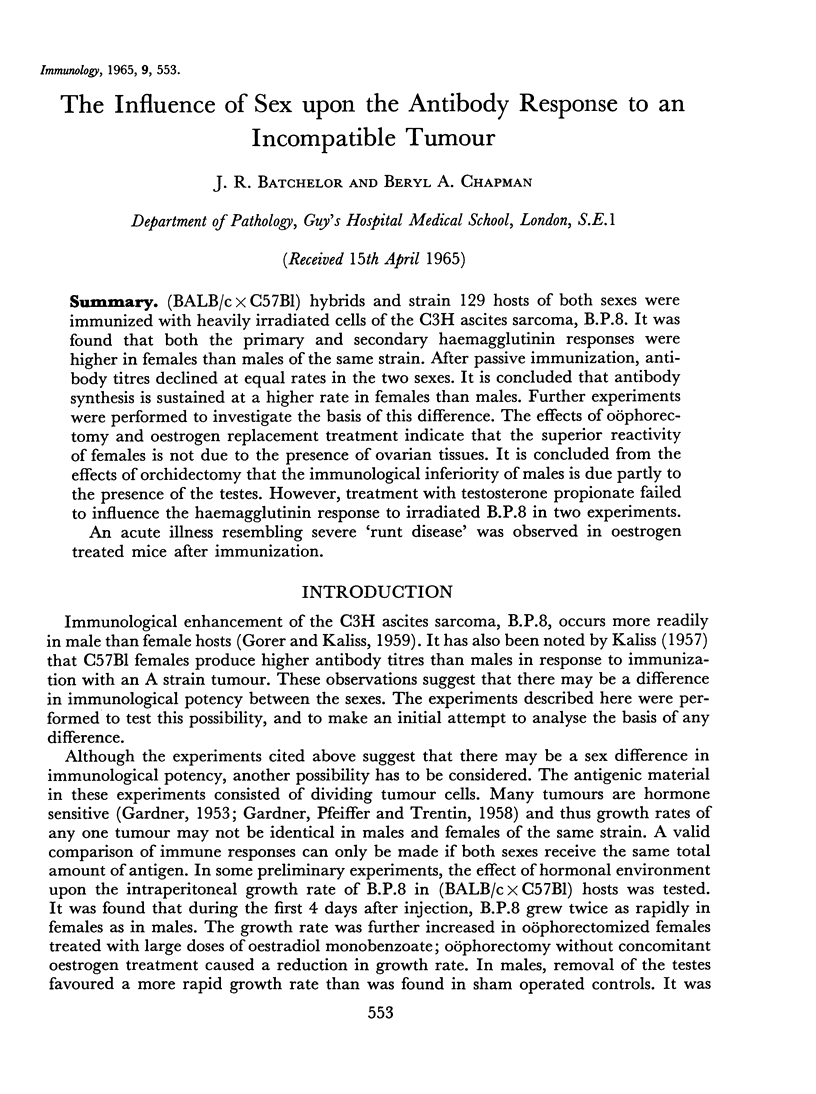
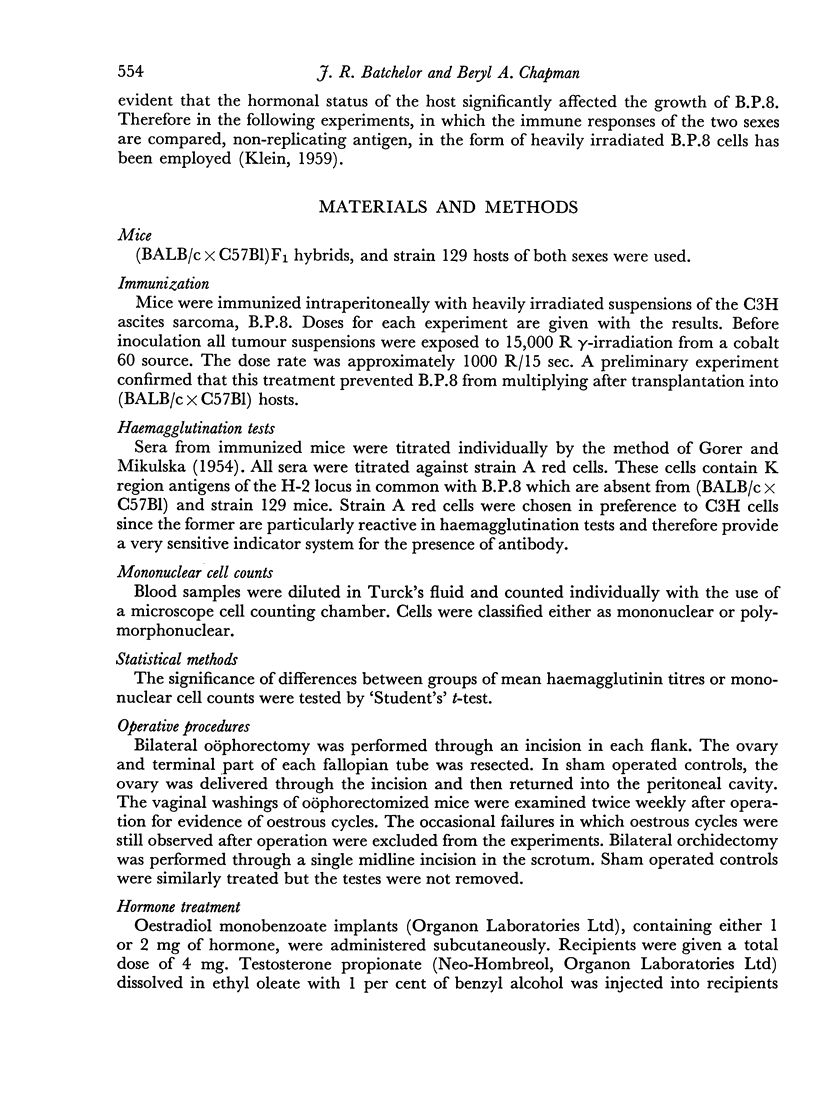
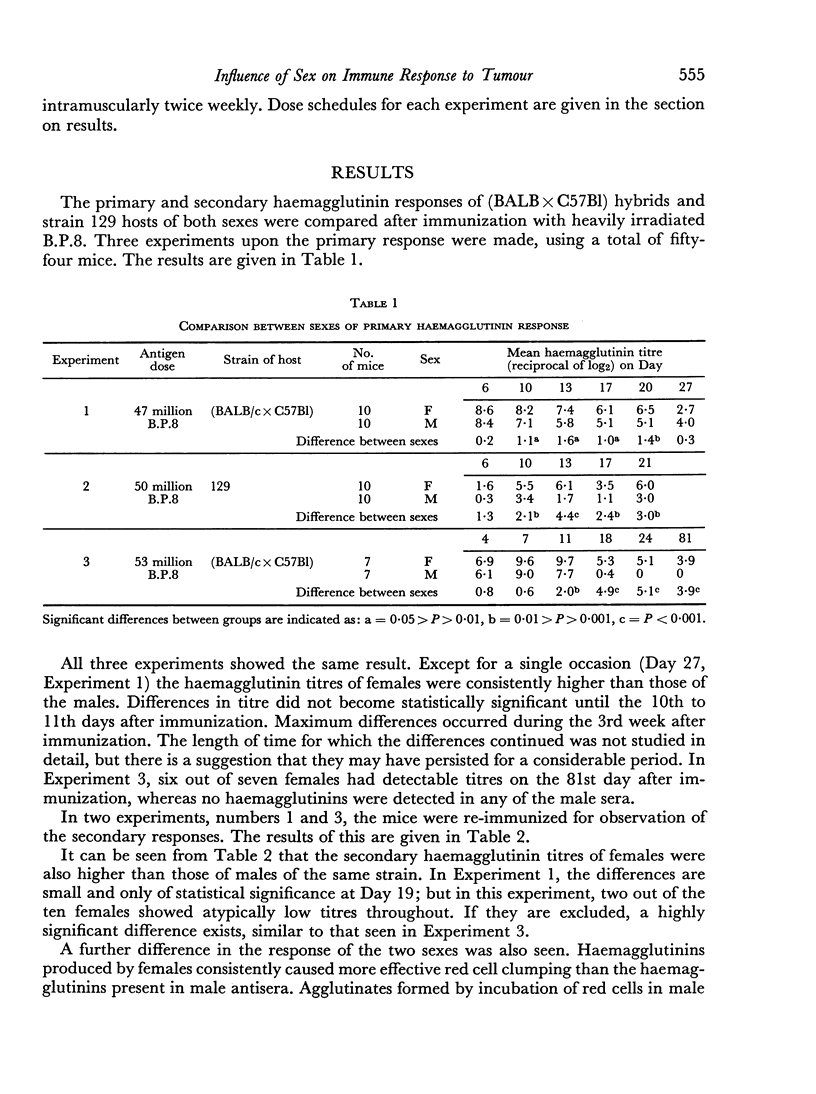
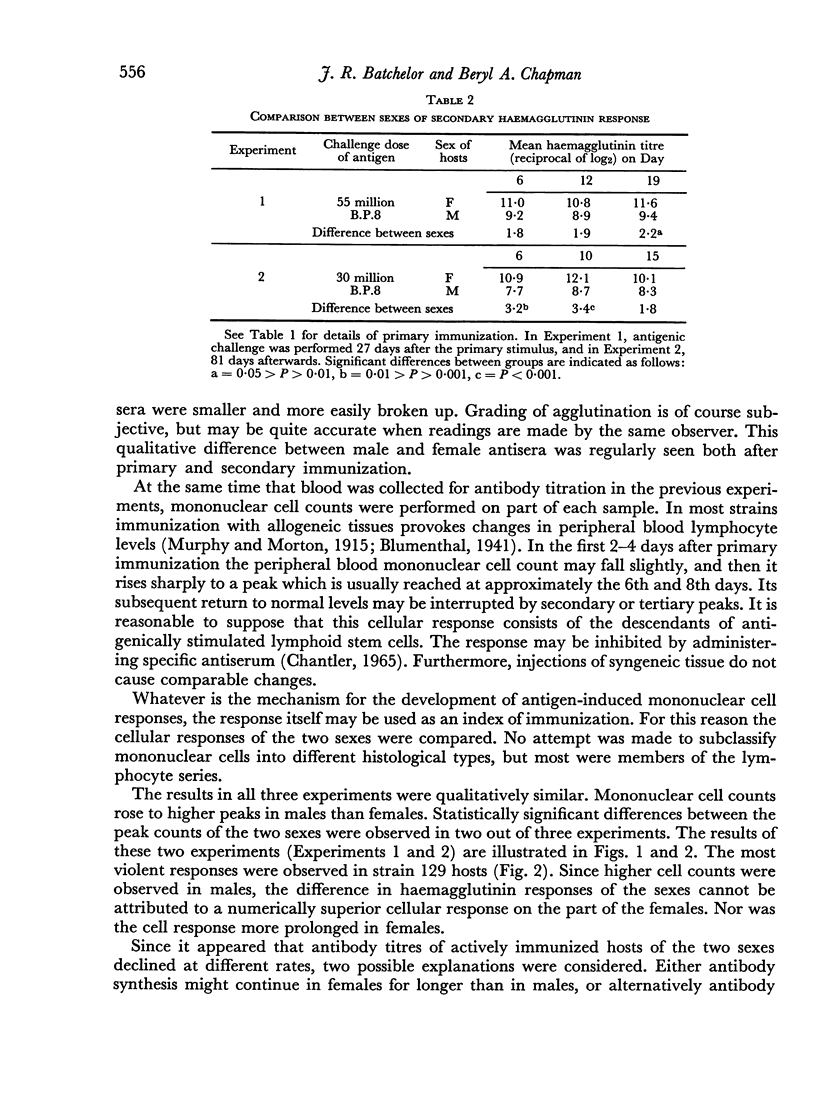
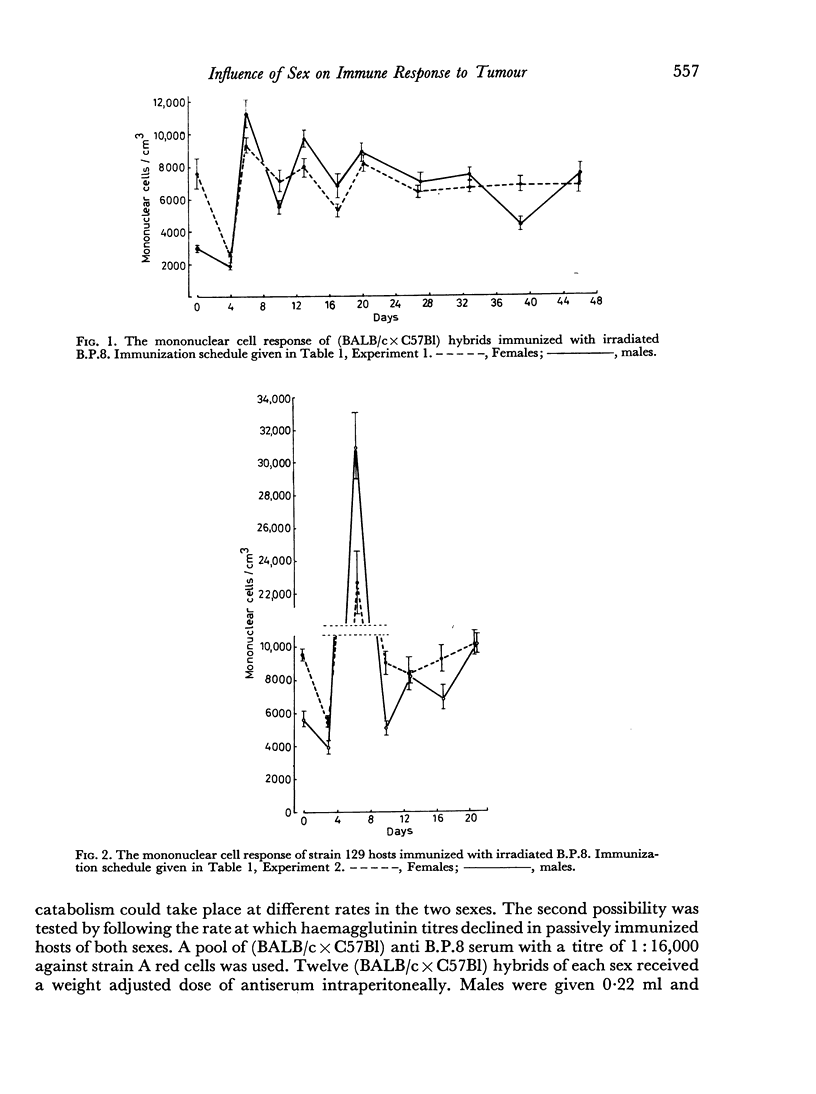
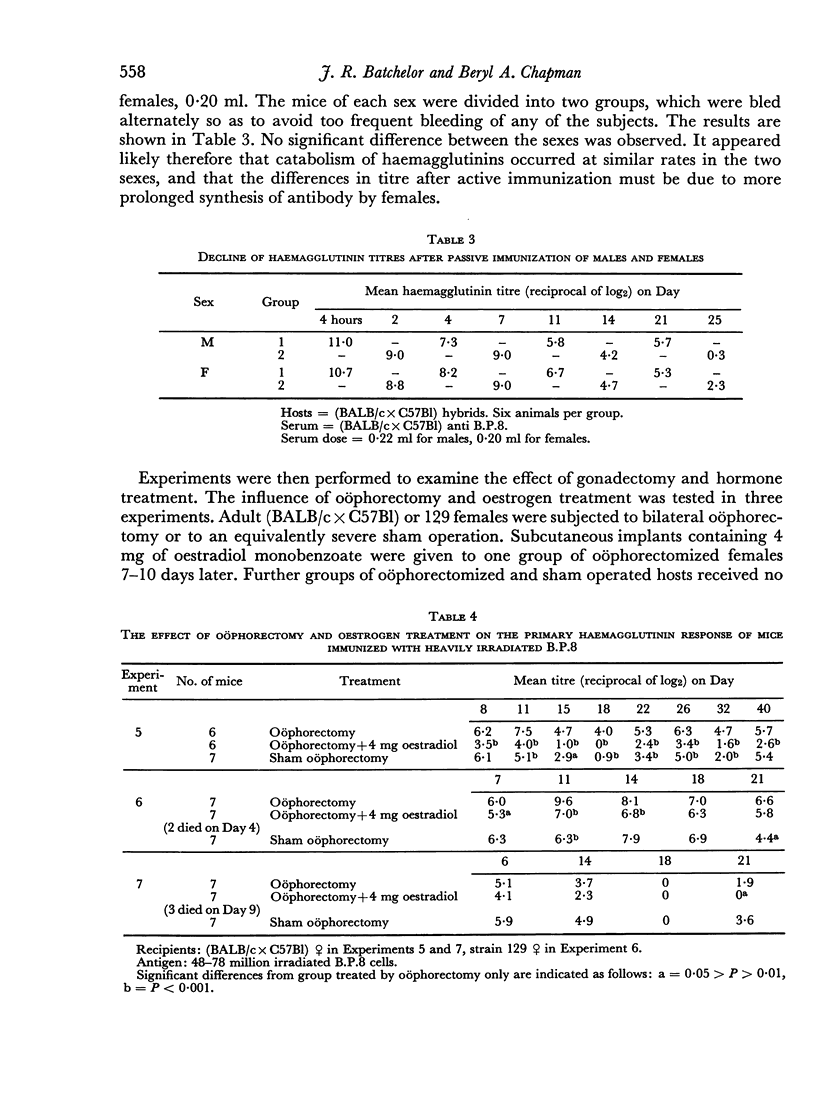
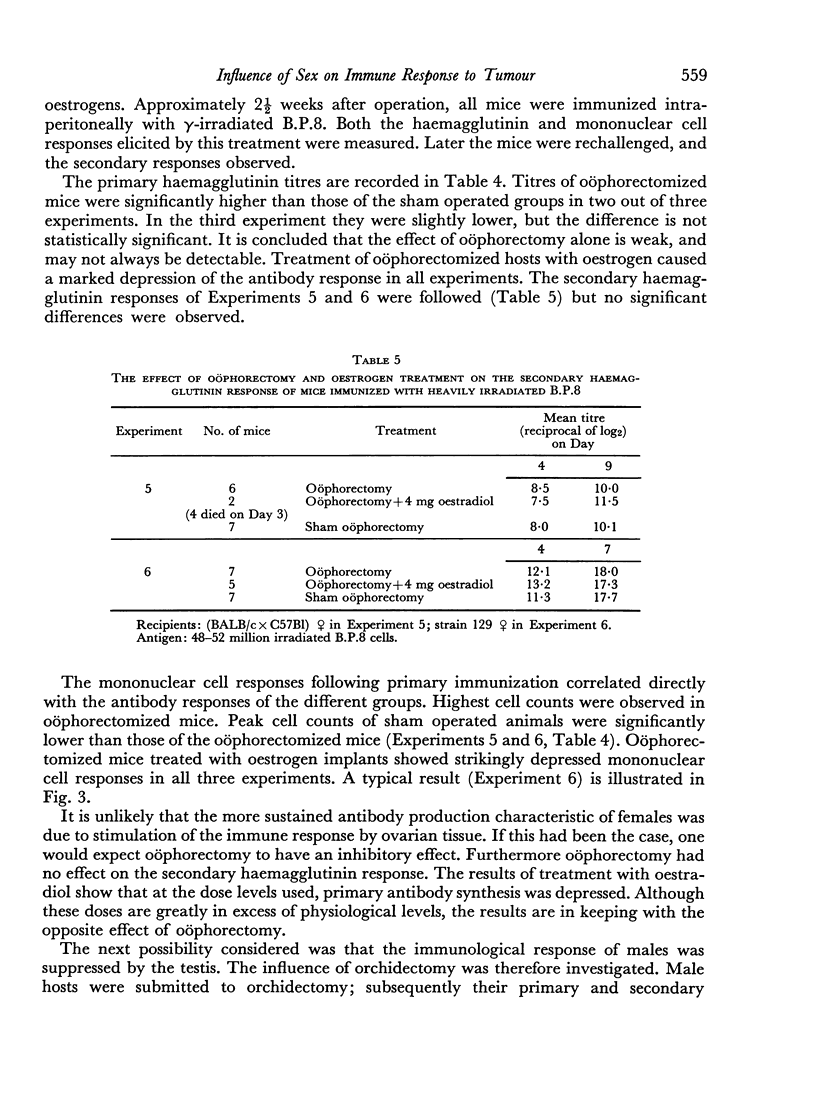
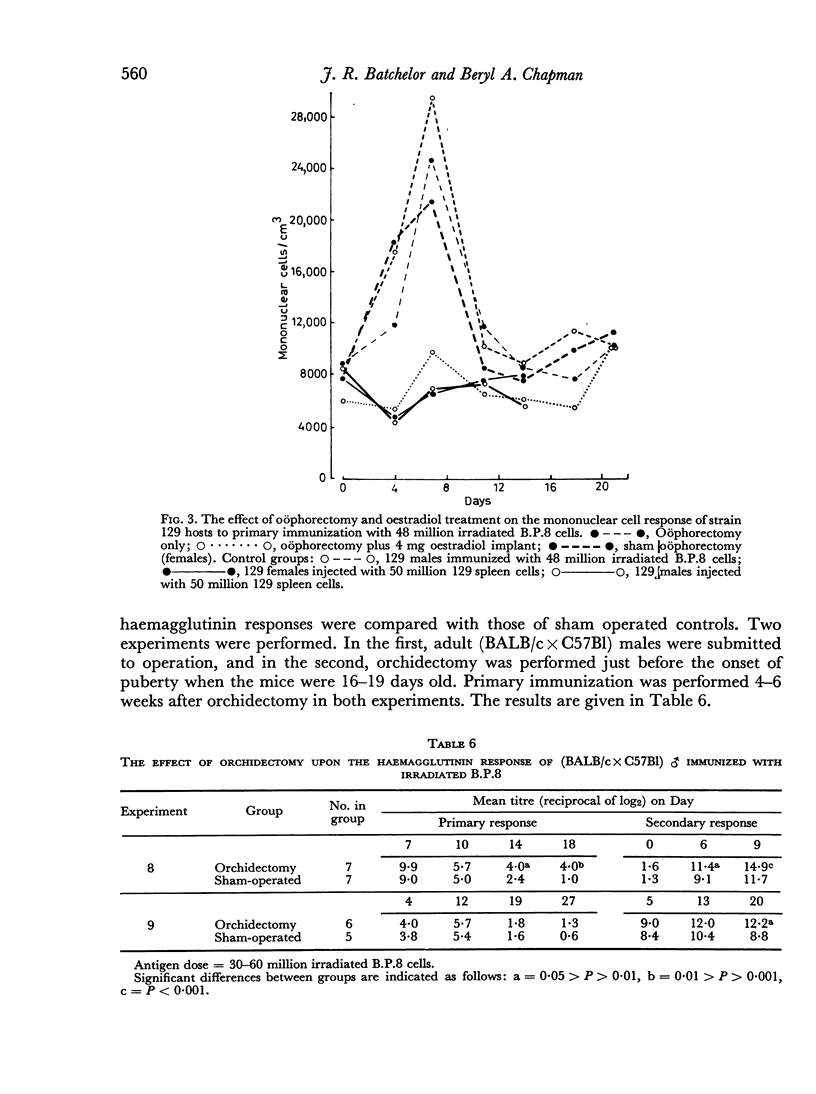
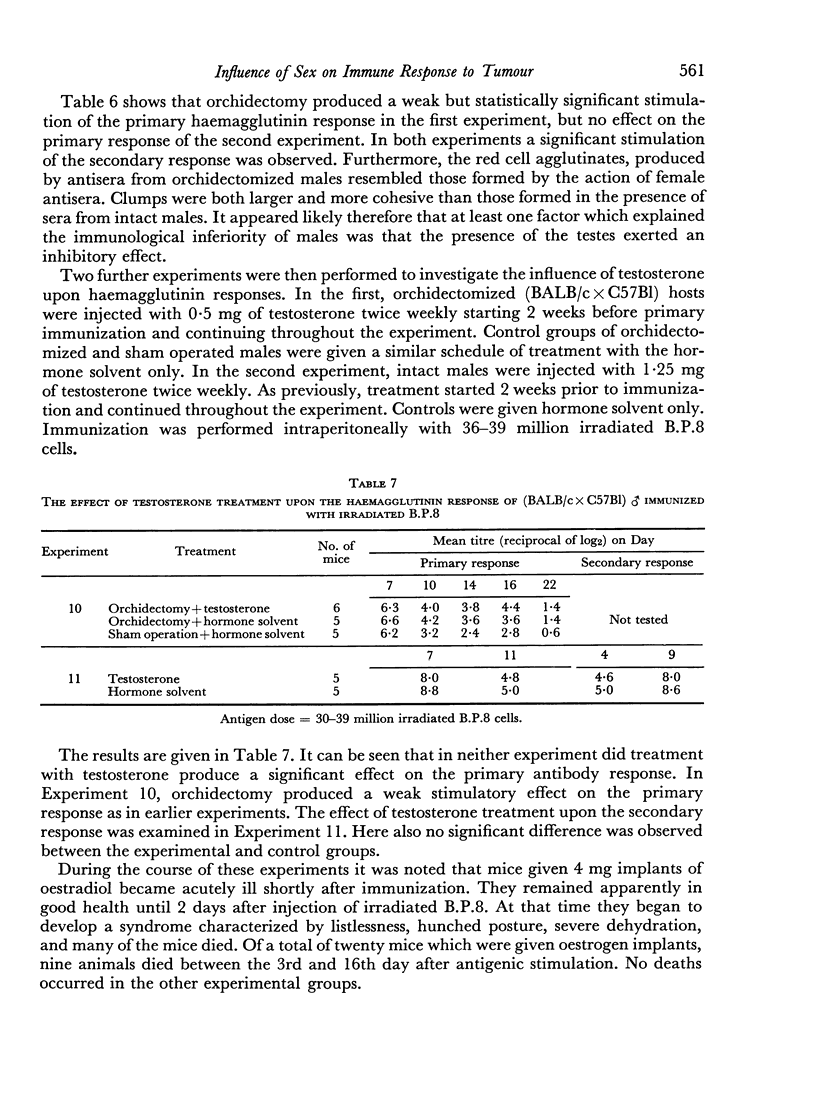
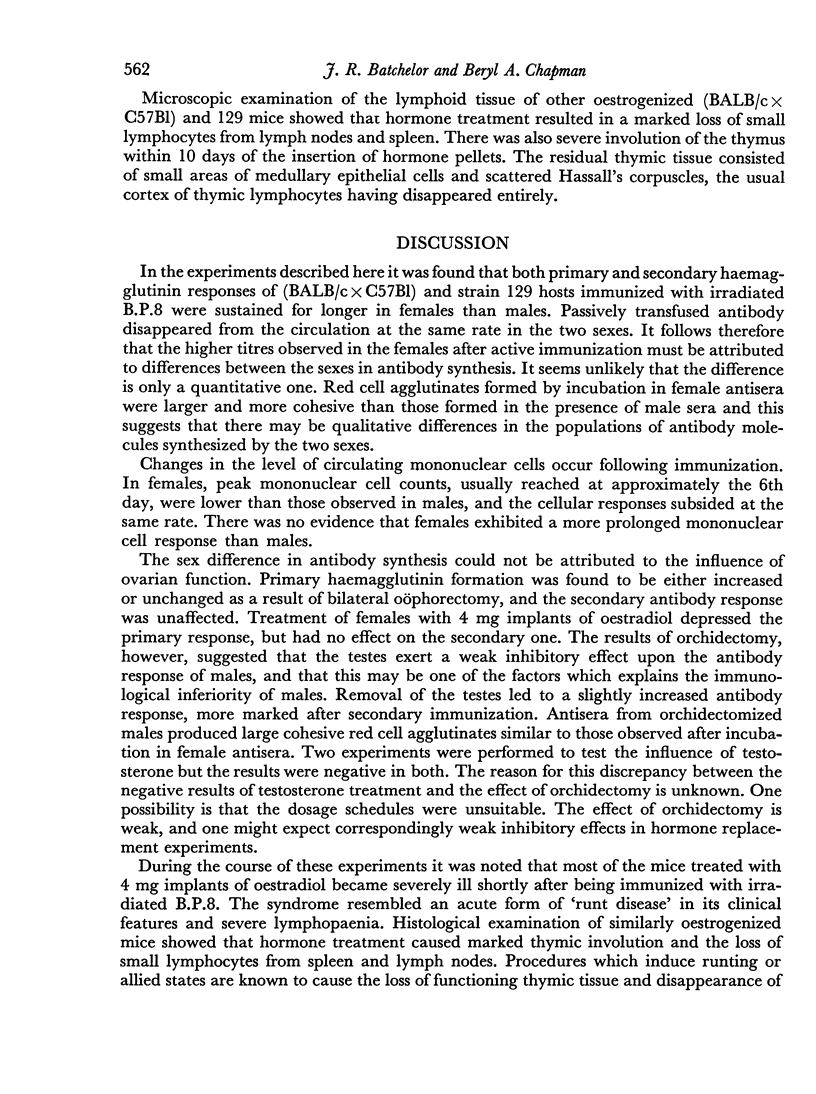
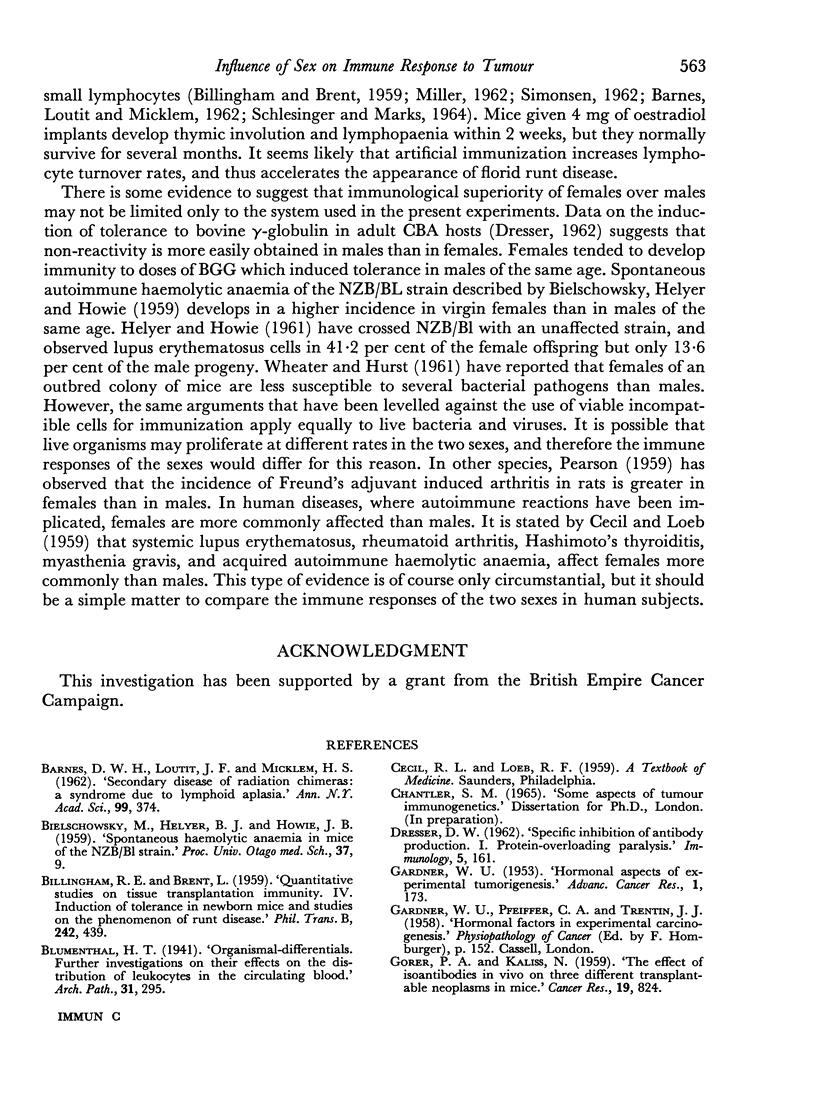

Selected References
These references are in PubMed. This may not be the complete list of references from this article.
- BARNES D. W., LOUTIT J. F., MICKLEM H. S. "Secondary disease" of radiation chimeras: a syndrome due to lymphoid aplasia. Ann N Y Acad Sci. 1962 Oct 24;99:374–385. doi: 10.1111/j.1749-6632.1962.tb45321.x. [DOI] [PubMed] [Google Scholar]
- DRESSER D. W. Specific inhibition of antibody production. I. Protein-over loading paralysis. Immunology. 1962 Jan;5:161–168. [PMC free article] [PubMed] [Google Scholar]
- GARDNER W. U. Hormonal aspects of experimental tumorigenesis. Adv Cancer Res. 1953;1:173–232. doi: 10.1016/s0065-230x(08)60004-4. [DOI] [PubMed] [Google Scholar]
- GORER P. A., KALISS N. The effect of isoantibodies in vivo on three different transplantable neoplasms in mice. Cancer Res. 1959 Sep;19:824–830. [PubMed] [Google Scholar]
- GORER P. A., MIKULSKA Z. B. The antibody response to tumor inoculation; improved methods of antibody detection. Cancer Res. 1954 Oct;14(9):651–655. [PubMed] [Google Scholar]
- KLEIN E. Isoantigenicity of x-ray-inactivated implants of a homotransplantable and a non-homotransplantable mouse sarcoma. Transplant Bull. 1959 Apr;6(2):420–424. doi: 10.1097/00006534-195904000-00032. [DOI] [PubMed] [Google Scholar]
- SCHLESINGER M., MARK R. WASTING DISEASE INDUCED IN YOUNG MICE BY ADMINISTRATION OF CORTISOL ACETATE. Science. 1964 Feb 28;143(3609):965–966. doi: 10.1126/science.143.3609.965. [DOI] [PubMed] [Google Scholar]
- SIMONSEN M. Graft versus host reactions. Their natural history, and applicability as tools of research. Prog Allergy. 1962;6:349–467. [PubMed] [Google Scholar]
- WHEATER D. W., HURST E. W. The effect of sex on bacterial infections in mice and on the chemotherapy of one of them. J Pathol Bacteriol. 1961 Jul;82:117–130. doi: 10.1002/path.1700820115. [DOI] [PubMed] [Google Scholar]


